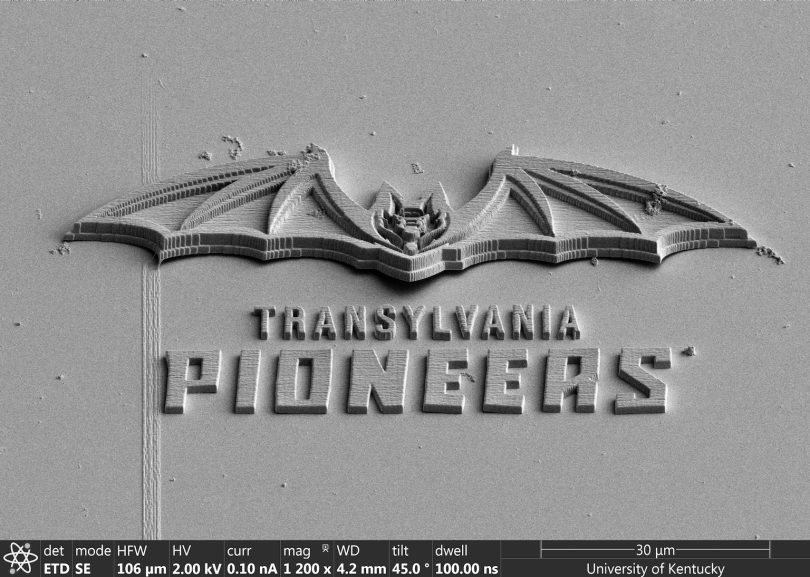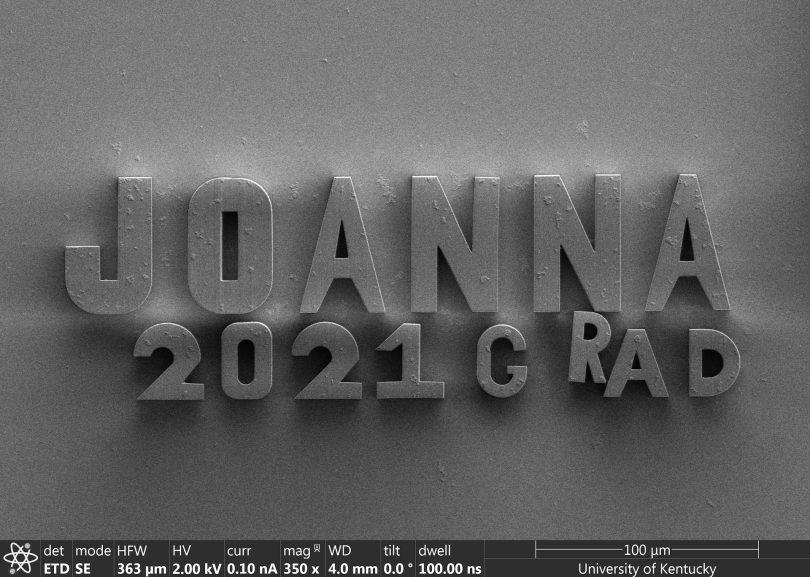A basketball court smaller than the width of a human hair? Billions of transistors on a microchip the size of a fingertip? Drugs that can zero in on a cancerous tumor?

Because nanoscience is integral to everything — from toothpaste and cosmetics to computer technology and the development of targeted drug delivery — Transylvania physics professor Stephen Johnson created a May term special topics class to offer students a broad introduction to the vast field and its infinitesimal structures.
“In terms of current research and engineering and development of new technologies, nanoscience is really at the heart of so much of what we do,” Johnson says, “whether we realize it or not.”
One of Johnson’s main objectives for the class was to introduce students to the interdisciplinary nature of nanoscience and its omnipresence. Johnson invited a range of guest speakers to help students understand how the field isn’t just physics or chemistry or material science. “It’s all of these things,” he explains.
“I wanted to give students a flavor of that, so we talked about physics, biology, chemistry and nanotechnology in health care and consumer products. I wanted to survey all of these disciplines at a high level for the students to really get a feel for where nano actually is in their everyday lives.”
For example, Transylvania biology professor Belinda Sly spoke with the class about nanotechnology in biology and nature’s use of it. Johnson says that a number of students are biology and biochemistry majors and are interested particularly in the biological and health care applications of nanotechnology.
Eager to give his students hands-on experience, Johnson also worked with his former colleagues at the University of Kentucky microscopy center to enable each student to design and create a 3D nano fabrication. Students designed a structure using 3D computer-aided design software and worked closely (but virtually because of COVID-19) with UK and its electron microscope to make samples the width of a human hair.
“We created a 3D CAD design of our choosing to be made at the nanoscale (10^-9 meters),” says Madison Kellione, a physics major and sophomore basketball player from Harrison County. Kellione used photos she took of Transy’s basketball court for her design. “UK used two-photon lithography to polymerize our 3D CAD designs using a Nanoscribe to create the particles. And then they used a scanning electron microscope to image the particles.”
Using a viscous liquid plastic material, Johnson explains, colleagues at UK used the Nanoscribe to write with a laser beam to create the design, building layer upon layer as the material solidified.
“With this instrument, you can do something as small as 100 nanometer features,” Johnson says, providing a further example as context. “A human hair is about 100,000 nanometers in diameter. So this machine can do 100 nanometers. It can write things really small.”
“The sky was the limit in terms of using their creativity,” Johnson says of his students. “Some chose to draw by hand in the software. Some imported images and modified them.”

Johnson is pleased with the outcomes. “There were so many spots along the way to have hiccups,” he notes, “whether in the design or printing phase.” But the process went smoothly. “The students really enjoyed it. They worked hard, and they achieved a lot in making these structures,” he says. “Getting to see them was extremely fulfilling and rewarding for everybody.”
Collaborating with the electron microscopy center at UK, where Johnson did his post-doctoral work and later worked with faculty on research grants, proved to be mutually beneficial. From the perspective of the nano fabrication center, Johnson notes, “they were able to do some outreach and show off their equipment to aspiring young scientists, and we were able to learn at our end. It fit perfectly on both sides.”
Reflecting on his May term class as a whole, Johnson says, “I think students got a really good exposure to a lot of different things. And I think they had a good time.” He’s also seen their interest roused. “Nanotechnology in health care really inspires a lot of those students. They’re looking ahead long term and thinking about what they want to do with nanotechnology in the future.”






